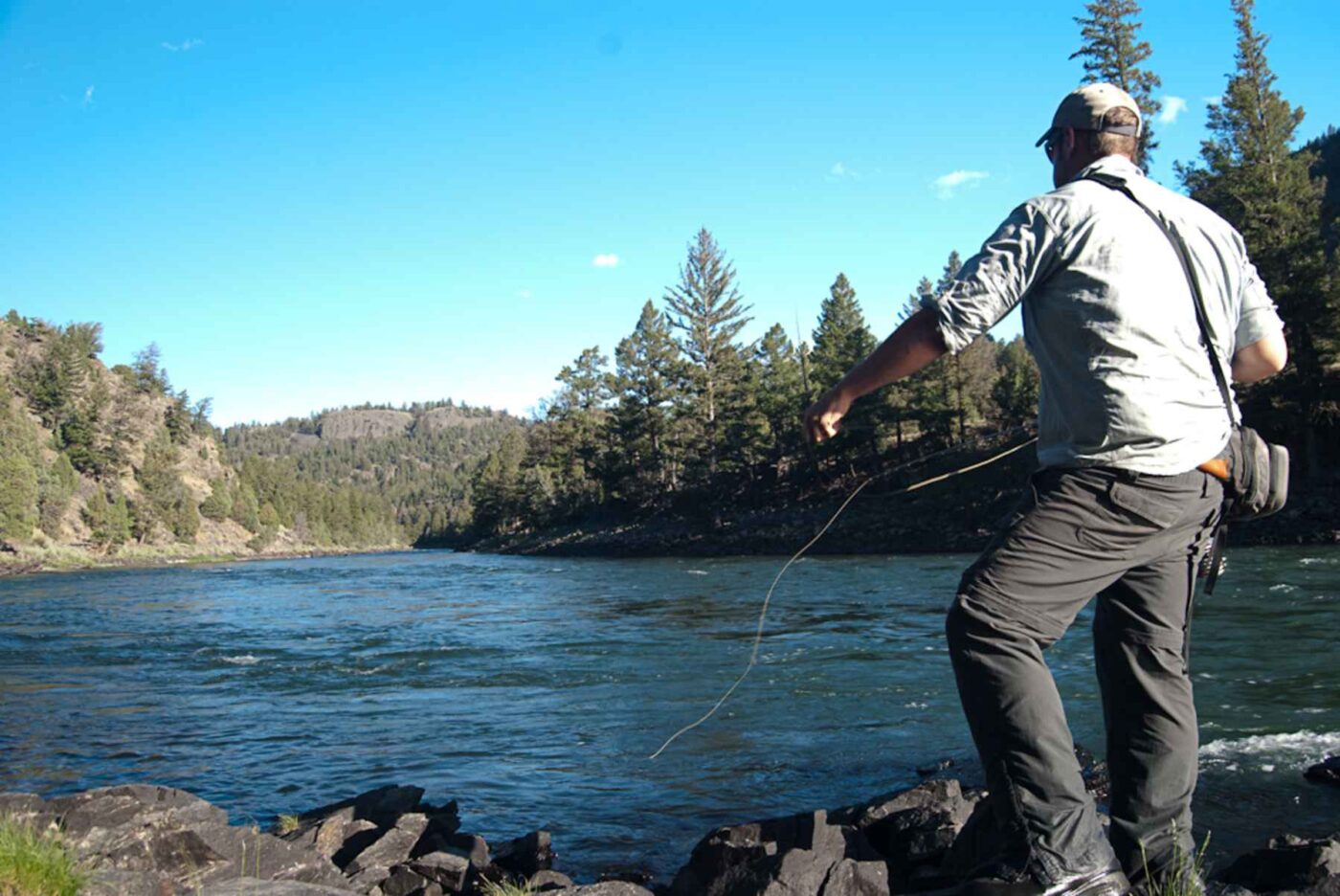It was raining. Hard. My favorite rivers were blown out and flooded. Waders were leaking and rod tips had snapped. The fish were slow and sluggish and not biting. Frankly, there wasn’t much that had gone right on this trip. That was my introduction to fishing the Bighorn River.
We had spent a mostly wasted half-day on the Blackstone (one of my favorite trout rivers), but recent thunderstorms had left it high, muddy, and dangerous. So, we headed up out of the foothills to try our luck in the true high country.
Not exactly an auspicious way to introduce yourself to a river and even less one that you’d expect to leave you with good memories. Despite all that, I can’t wait to get back to this river.
Table of Contents
ToggleThe Bighorn River Fishing
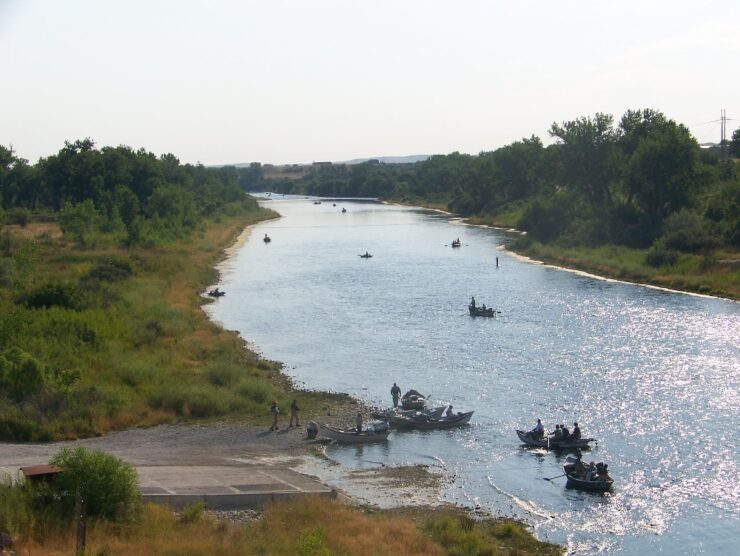
The Bighorn River starts underneath Mount McGuire on the edge of the Canadian Rockies. From there, it flows south, over the impressive Crescent Falls and through a torturous canyon, eventually joining the North Saskatchewan River near Abraham Lake. It’s a stunning river and worth the trip for the scenery alone.
Most of my experience is limited to foothills and boreal forest rivers, so the Bighorn is a bit of a challenge.
It’s a true mountain river – and that means fast. It’s not especially big though, so it’s not dangerous to wade.
I’ve been told that there are trails that lead down into the canyon sections below the falls, but I’m a bit of a chicken when it comes to heights and so really have no interest in descending that far down a sheer cliff face.
Besides, my brother, who was with me again for this trip, has a penchant for falling in while wading and that could be genuinely dangerous in the fast canyon water.
Flies And Tackles
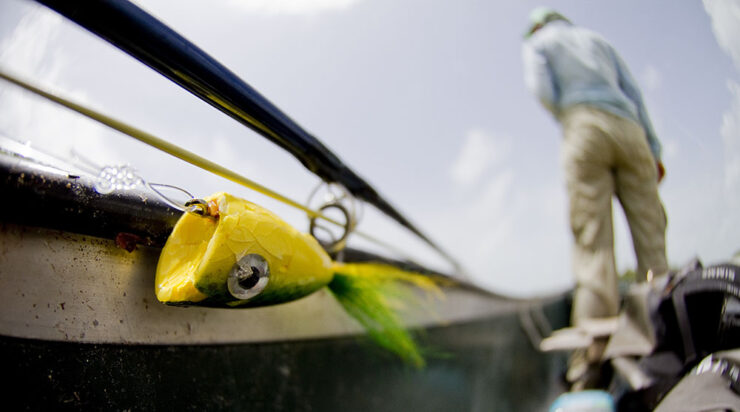
Despite my best advice, both my brother and a friend who had accompanied us determined that dries were going to be the order of the day. A variety of Adams, Black Gnats, Pale Morning Duns, Elk Hair Caddises, and Humpies was thrown – all to no avail.
I fished a pair of nymphs under an indicator – a bead head pheasant tail and a bead head prince. While I’d like to claim that my sage advice resulted in a lot of fish, sadly it did not, though I did outfish the other two, which is something.
As a mid-size mountain river, 4 and 5 weights are the go-to here as they are on most similar rivers. None of us were much in the mood to swing streamers, so heavier rigs had been left at home.
Getting There And Getting Started
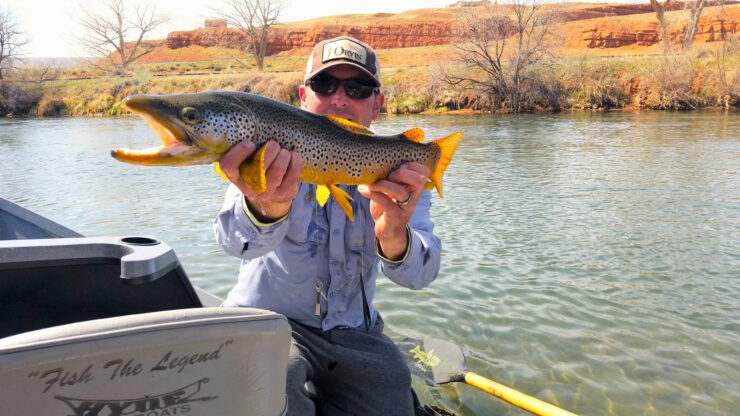
The easiest place to start on this river is right from the Crescent Falls campground. Incidentally, the campground itself is kind of neat, with a shallow water crossing necessary for access. We had no trouble in my 4×4, and I don’t think even any crossover with a bit of clearance would have much trouble.
The river at the campground is wide and braided, though there is a beautiful pool right at the bottom of the trail.
We spent a lot of time here, certain that there must be something in it. It looked too good for them not to be.
In hindsight, I think proximity to the campground may have been that pool’s undoing.
Working up the river from here is pretty easy, though. One word of caution: My friend, who weighs somewhere north of 300 pounds, suggested we cross the river after fishing our way through a deep run. After watching him laugh at our trepidation and casually slosh through the thigh-deep water, I felt like I had little choice but to follow.
I’m not a tiny guy, but the river picked up all 190 pounds of me and deposited me 3 or 4 feet downstream. If there had been any boulders behind me or if I’d been set down in a hole, it could have been a scary, wet day. So be careful out there.
Bighorn River Fishing
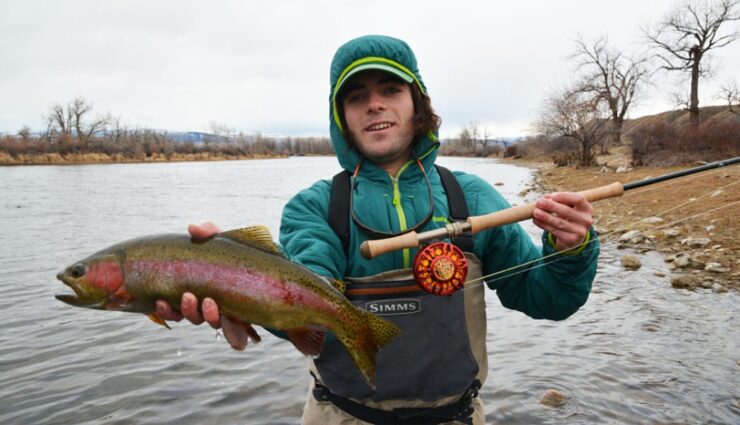
The Bighorn turned out to be a pretty tough river. A combination of fast mountain water, poor weather, and impatient companions led to this being a single fish outing.
The lone fish we landed ended up being a cutthroat about 8 inches long, caught on a bead head pheasant tail that I’d weighted with a little tungsten to put it right down to the bottom.
All in all, though, it’s a beauty of a river, easy to get to, and with some big, slower pools within reach of the campground. Sadly, a heads up from some other anglers of a thunderstorm warning had us scurrying back downstream just before we reached these pools.
It’s definitely worth the trip up for the scenery alone.
If you’re a little more comfortable with heights the canyon is an alluring adventure, though I suspect it’s more of a rock scramble than a fishing trip (and maybe a dangerous one at that).
Adelaide Gentry, a seasoned kayaking enthusiast and expert, is the driving force behind KayakPaddling.net. With over a decade of experience navigating the world’s most challenging waterways, Adelaide combines her passion for adventure with a deep knowledge of kayaking to provide insightful and practical guidance for paddlers of all levels.
Related Posts:
- Heavy Duty Fishing: 11 Best Rods And Reels For Big Fish 2024
- 10 Best Saltwater Fishing Boats - Ultimate Angling Adventure
- 16 Best Kayak For Beginners 2024 - Kayaking Adventure Gear
- 12 Best Fishing Lures Ever 2024 - Baits That…
- 12 Best Truck Bed Hitch Extenders for Kayak 2024 -…
- 12 Best Kayak GPS 2024 - Find Your Way to Adventure

